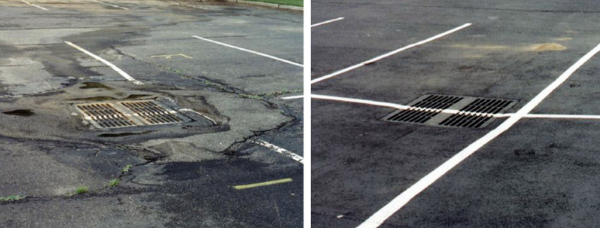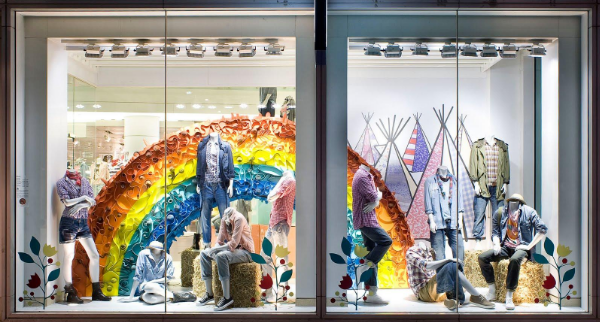Many of these maintenance checks will fall into the promotional run up to busy seasonal occasions, and around the great British weather.
To ignore the devil in the details of maintenance, repair work, and health and safety checks could see grossly increased repair and redecoration costs, safety risks to staff and customers, and even insurance increases due to the property’s condition.
First impressions: external
Most retail outlets have metal, Plastisol or wooden cladding facades, which are prone to rust if not painted correctly. Even when installed from factory pressing plants, the way cladding panels are cut can lead to a type of rust which is more commonly known as cut edge corrosion. Due to this, it is imperative that cladding sheet edging is semi-regularly audited for signs of wear and tear, discolouration or water pooling on roofing areas.
Cut edge corrosion can be avoided by using a high-performance cladding paint. It can seal the gaps between layers where moisture seeps in, creating rust. Cladding can be redecorated or rejuvenated in a wide variety of colours, and applied by brush or roller, but more typically spray equipment. The difference between newly painted vs old and tired cladding facades is remarkable.

Conducting repair work to concrete and tarmac outside business premises is vital before and after the winter months – when cold, frost and ice are more likely to do the most damage to small cracks, divots and potholes. Car parks are frequently the first place to check, as customers will not take fondly to abused and ignored damage where they park and load up their cars with your stock!
Again, the before and after look of tarmac repair is remarkable.

Depots and warehouses frequently have smaller and easier to maintain entrances – so keep windowsills, door frames, doors and even the security grills clean, well maintained and representative of the company’s expected reputation.
High Street shops fall in to one of two categories – those where the window displays are archaic, out-of-date and irrelevant to consumer trends (often with poor lighting and sun faded product colours), or those which have regularly updated window displays, rotated stock, promotional offers, nice banners and shopping “calls to action”. Walk-in trade can plummet if a shop’s window display receives no TLC – and it is often a qualified person’s job to decorate the display using consumer psychology. Get your promotions and exclusive offers in the window. Boost the visual aesthetic of bold colours and lighting. Regularly move the display around so that regular passers-by continue to have their eye caught by stock rotation – until something genuinely appeals to them (and from here it is up to you to upsell, collect email details or other remarketing channels for seasonal sales pushes).

First impressions: internal
Once the customer or client is in the door thanks to the externally facing work you have done to drive forward the visual appeal of your business, the sales work is halfway done. Accommodating music, lights, ambience and vibe will allow the customer to feel they can browse. Assistance is always welcome, but with so many companies demanding of their staff to chase customers down and get the sales, more and more customers are put off by the hard sell. The ‘enthusiasm’ of the salesperson must depend on the time of day and day of the week to best judge customer psychology and when they may be in a rush, or when they may be browsing for several purchases at once.
Well-kept floors, both clean and in excellent condition, will act as your VIP red carpet.
Clear passageways between cardboard displays, shelving or installations is a must – retail claustrophobia is harmful to sales. Clearly labelled sections are great, but be sure to mix things up and move stock and displays around – this is often seen as A/B testing the sales performance based on product location. Putting lighting on sale? Move lightbulbs next to the display items.
Welcoming checkouts are the envy of many retailers, whose tills overflow with returns, paperwork, damaged stock and stressed out staff. The quicker and more streamlined a checkout process, the quicker the customer will come back. Horrid checkout experiences may drive your customers online or to competitive local stores.
Overview
Maintenance checks must incorporate:
- Repair work
- Decoration and painting tasks
- Floor condition – are surfaces that should be anti-slid still holding up?
- The natural flow of the customer in-store experience – can it be A/B tested for better sales, quicker times in store and increased profit?
Staff enthusiasm – after all the aesthetical work, the last thing a growing business needs is a bad reputation due to staffing problems.






